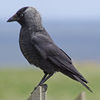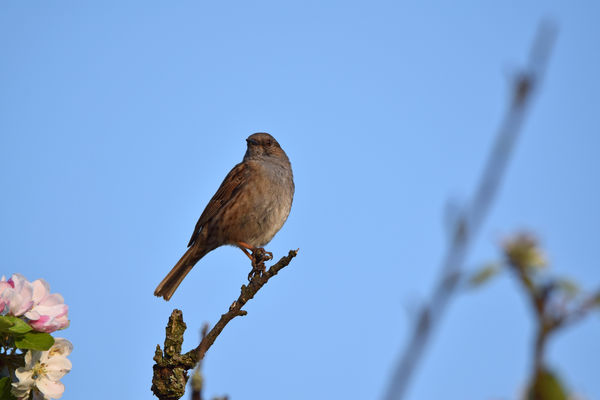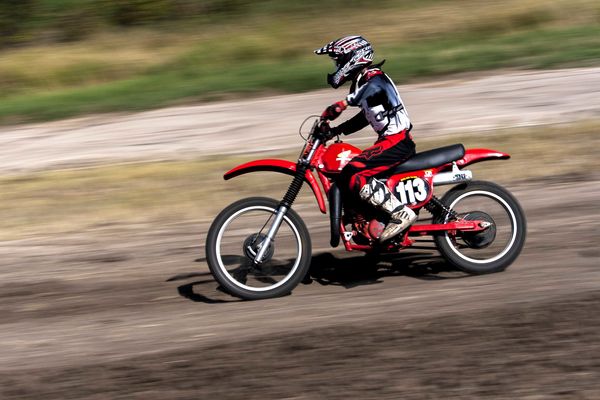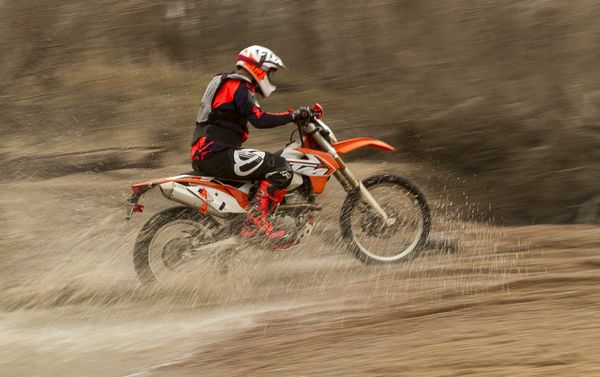Help with new Lens
Jun 12, 2016 09:45:55 #
I use the focus limiter for close up work but not for work other than that.
Jun 12, 2016 13:27:01 #
amfoto1
Loc: San Jose, Calif. USA
bingonut wrote:
I am trying to learn everything about my new Tamro... (show quote)
Lots of good replies so far... I probably won't add much new info:
Focus Limiters are simply used to speed up focusing performance, when you know that you'll only be shooting within a certain range. It sounds as if yours gives you choice of full or 15mm to infinity. Normally you'd probably leave it set to full, when you don't know for certain whether or not you'll need to focus on something closer. But, if working with subjects at 15mm or farther away, you can set the limiter to the second setting to help speed up focus a bit.
Aperture Priority, Shutter Priority (or Program or Manual, for that matter) are all exposure modes you might choose to use in different situations. If you can, use Manual. That way you "lock down" all your exposure settings right where you want them. However, you can't always do that... for example if you are shooting a subject that's moving and sometimes is in shadow, sometimes in full sun, you'll need to use one of the auto exposure modes instead. Then you have Aperture Priority, which you'd use if depth of field is your primary concern.... Or Shutter Priority, which you should use if stopping motion is your biggest concern. For me, Program is sort of a a fallback mode, that I only use when I need to shoot fast and don't have time to think about it and/or am not particularly concerned about either stopping movement (or deliberately blurring it) or depth of field.
If your camera has Auto ISO, that's actually yet another form of auto exposure... even when it's used with Manual. In fact, I'd recommend only using Auto ISO with Manual (when you want to lock in both shutter speed and aperture/depth of field, but still need variable exposures). I haven't been able to think of any useful purpose for combining Auto ISO with Aperture Priority, Shutter Priority of Program auto exposure modes. Using Auto ISO with any of those makes it sort of an auto-auto mode... No telling what might happen! Also, Auto ISO needs control and limits, just like the other auto exposure modes have. If your camera has means of setting an upper limit on Auto ISO... great. You also need Exposure Compensation with it, same as with the other auto exposure modes. (I've had cameras in the past that didn't have either of these, so Auto ISO was pretty useless and I avoided it.)
With an really long telephoto such as that 150-600mm, there will likely be a lot of times you'll want to shutter priority, to keep to faster shutter speeds and prevent "camera shake blur", although the lens has image stabilization that can help to some extent. If the lens didn't have stabilization, racked all the way out to 600mm on most modern DSLRs you would want to keep to about 1/1000 shutter speed or faster. With stabilization, you probably can get similar sharpness with 1/250 or possibly even slower shutter speeds. However, keep in mind that image stabilization (Tamron calls it VC, I believe) cannot do anything to reduce subject movement blur. For that, you'll still need faster shutter speeds (a flash also can help freeze movement and offset camera shake).
I don't know if your lens has a "Panning Mode" setting on the image stabilization. Some lenses with IS do. In the panning mode, one axis (the horizontal one) of stabilization is turned off, while the other (vertical) continues to work. This allows for deliberate background blur effects, most often used to give the impression of speed in still photos. The idea is to photograph the subject relatively sharply, while the background behind them becomes blurred with movement to some extent.
You might be able to handhold for panning shots, but likely will find it easier to do on a tripod or monopod. To create a panned background blur, you need to use slower shutter speeds. Just how slow depends upon several factors... distance to the subject, speed of the subject, direction the subject is moving in relation to you, focal length you've zoomed the lens to, and more. Best to just experiment and learn for yourself, which settings to use. Slower shutter speeds will produce stronger background blur effects. But it also becomes more difficult to capture the subject sharply against that background, with slower shutter speeds.
Here are some examples where I "drag the shutter" with slower speeds and panned to produce some blur effects in various ways:
Handheld, 1/25 shutter, no flash (300mm lens, note how faster moving hooves and legs of the horse are more strongly blurred)...

Same subject, 1/25 and lens... but this time moving more toward me, makes panning slower and subject sharper...

This is another handheld panning shot, 1/100, no flash (shorter 90mm focal length & closer subject)....

One more handheld, panned shot... this time using flash, 1/30 shutter (52mm on APS-C crop camera)...

So, experiment with panning shots. Take many shots at different distances, focal lengths and shutter speeds... because doing this there are always only a few truly "successful" shots. All of us end up throwing away a lot!
Jun 12, 2016 14:08:12 #
bingonut wrote:
I am trying to learn everything about my new Tamro... (show quote)
First off, what camera body are you using ??
Jun 12, 2016 14:35:07 #
bingonut
Loc: Cape Cod
amfoto1 Thanks for your reply and all the great information.
imagemeister I am using a Canon EOS Rebel SL1
CarlD Thanks for your reply
imagemeister I am using a Canon EOS Rebel SL1
CarlD Thanks for your reply
Jun 12, 2016 14:37:56 #
bingonut wrote:
I am trying to learn everything about my new Tamro... (show quote)
Some confusing information here about the Tamron focus limiter, some of it plain wrong! It's simple- with the switch at 'Full' (away from the camera), the lens will focus through its full range- from about 2.5 metres to infinity. With the switch at '15m-âÃÂÃÂ' (nearer the camera) it will only focus between 15m (15 metres- not 15mm- that would be amazing!) and infinity. That cuts out about two thirds of the movement, so if it's struggling to focus, a lot of time is saved. I've attached a photo of a Dunnock (sparrow sized) taken at 600mm with a D5300 (crop sensor) at about 15m distance- or maybe a bit less- as a guide.
Can't better the previous advice on panning- it takes a LOT of practice!
Jun 12, 2016 14:54:03 #
bingonut
Loc: Cape Cod
Backdoor Thanks for your reply. Information is great. Your picture is great, hope I can shoot a picture like that sometime.
Jun 12, 2016 15:09:53 #
bingonut wrote:
Backdoor Thanks for your reply. Information is great. Your picture is great, hope I can shoot a picture like that sometime.
Cheers- You will. No substitute for practice.
Jun 12, 2016 15:13:23 #
Jun 12, 2016 15:21:38 #
bingonut wrote:
amfoto1 Thanks for your reply and all the great information.
imagemeister I am using a Canon EOS Rebel SL1
CarlD Thanks for your reply
imagemeister I am using a Canon EOS Rebel SL1
CarlD Thanks for your reply
Are you trying to hand-hold or using support of some kind ??
Jun 12, 2016 15:23:34 #
imagemeister wrote:
Are you trying to hand-hold or using support of some kind ??
I think this video will help you a lot ..........
http://www.youtube.com/watch?v=fg57mHKnBcg
Jun 12, 2016 15:48:26 #
bingonut
Loc: Cape Cod
I have taken a few pictures handholding and with a tripod. I just bought a new tripod.
Sunpack Platinum Plus Ultra 7000TM.
Sunpack Platinum Plus Ultra 7000TM.
Jun 12, 2016 18:11:38 #
bingonut wrote:
I am trying to learn everything about my new Tamro... (show quote)
If you want to learn panning, find a local MX, Hare Scrambles, or other motorcycle event and just have fun shooting lots of pictures.
Lots of action going on, so there won't be a lot of down time. You might try a ND filter, if it's bright and sunny. I have one that's adjustable. I use Time Value (Tv) and set the shutter to different amounts and look at the image afterward and adjust as necessary. The faster the subject, the faster the shutter speed.
I need a lot of practice with slower moving subjects.
I included some shots.
Start with 1/10th to maybe 1/60th sec. and above all, just have fun.
Keep the ISO low, and use maybe f8, or greater, for more DOF.
Another option is to stand by the hi-way and shoot the cars going by. Maybe get a cop car, that looks like he's going a gazillion MPH.


Marion
Jun 12, 2016 18:50:40 #
bingonut wrote:
bdk
Thanks again, your information is good.
The lens has a switch for the limiter, either full or 15mm. They say full for close up and 15 for normal pictures.
Thanks again, your information is good.
The lens has a switch for the limiter, either full or 15mm. They say full for close up and 15 for normal pictures.
The focus limiter on all of my lenses, that have one, say 'Full' or '3m to ∞'.
I don't understand the 15mm since there is no way that lens will focus that close.
I use the '3m to ∞' to stop the lens from searching the closer range when I am shooting birds, etc. Switch to 'Full' when I want to focus on a close subject such as a flower.
In other words, what "they" say to do

Jun 12, 2016 18:51:40 #
Here is what Ken Rockwell says about the focus limiter: "FULL - 15m-∞ Switch. This is a focus limiter. Leave it at FULL. Set it to 15m-∞ only if the lens is getting confused and trying to rack itself all the way in and out as you try to focus on distant targets. The 15m-∞ position prevents it from auto focusing closer than 15 meters (50 feet)."
...........where he gives an excellent and thorough review of the Tamron 150-600mm here: http://www.kenrockwell.com/tamron/150-600mm.htm
When I first received my Tamron 150-600mm lens a little over a year ago, I did extensive research on how I could get the best photographs. The overall consensus was that this lens likes a lot of light, i.e. is "not" a fast lens. For the price, not surprising. So, a lot of reviewers said the sharpest picture from this lens would be an aperture of f8 zooming in to about 550mm and f11 when at 600mm. Next, when shooting birds, we want to stop action, right? So, if the bird is in a tree, shutter should be around 1/1000 (birds are always twitching even when on a branch) and if in flight, 1/2000 or more. I use manual setting to set shutter and aperture settings. So, where does the camera get the light it needs? That's where the magic of auto ISO comes in which is where I have it set (ceiling at ISO 6400) on my Nikon D750. When possible, I shoot on a Nest Gimbal Head purchased from a fellow hog Carter here: http://www.cameracottage.com/ I hope these suggestions help you; they work for me. Oh, BTW, all of the other suggestions fellow hogs have given on this topic are valid as well. That's what's so great about this forum; there usually is no one solution to solve problems.
...........where he gives an excellent and thorough review of the Tamron 150-600mm here: http://www.kenrockwell.com/tamron/150-600mm.htm
When I first received my Tamron 150-600mm lens a little over a year ago, I did extensive research on how I could get the best photographs. The overall consensus was that this lens likes a lot of light, i.e. is "not" a fast lens. For the price, not surprising. So, a lot of reviewers said the sharpest picture from this lens would be an aperture of f8 zooming in to about 550mm and f11 when at 600mm. Next, when shooting birds, we want to stop action, right? So, if the bird is in a tree, shutter should be around 1/1000 (birds are always twitching even when on a branch) and if in flight, 1/2000 or more. I use manual setting to set shutter and aperture settings. So, where does the camera get the light it needs? That's where the magic of auto ISO comes in which is where I have it set (ceiling at ISO 6400) on my Nikon D750. When possible, I shoot on a Nest Gimbal Head purchased from a fellow hog Carter here: http://www.cameracottage.com/ I hope these suggestions help you; they work for me. Oh, BTW, all of the other suggestions fellow hogs have given on this topic are valid as well. That's what's so great about this forum; there usually is no one solution to solve problems.
Jun 12, 2016 19:29:40 #
bingonut
Loc: Cape Cod
Marionsho,rwilson1942 & Vladimir200 Thanks for all your replies
Information is great. Will try using all the tips that was given.
Information is great. Will try using all the tips that was given.
If you want to reply, then register here. Registration is free and your account is created instantly, so you can post right away.








